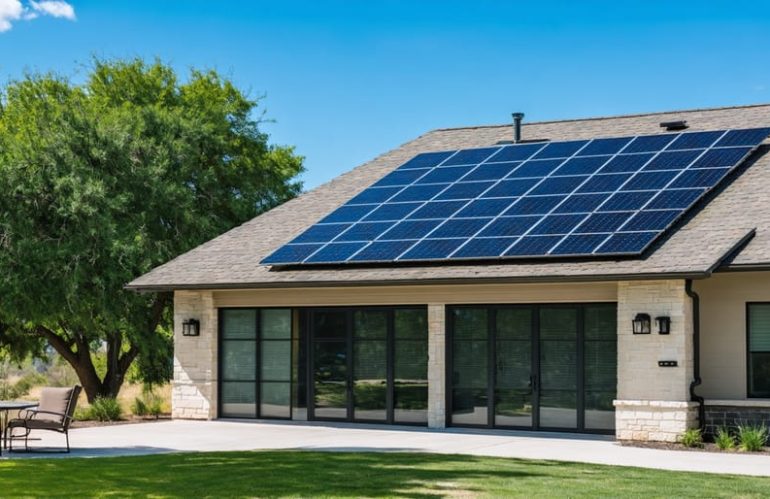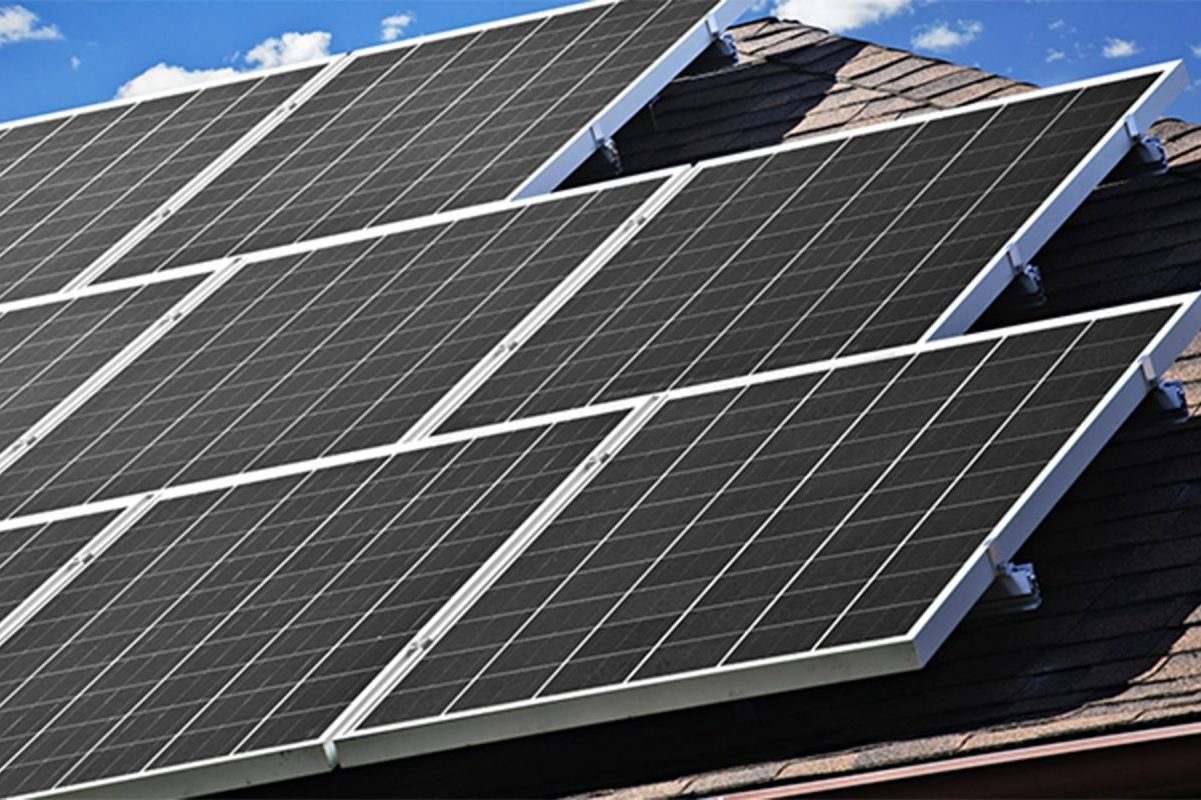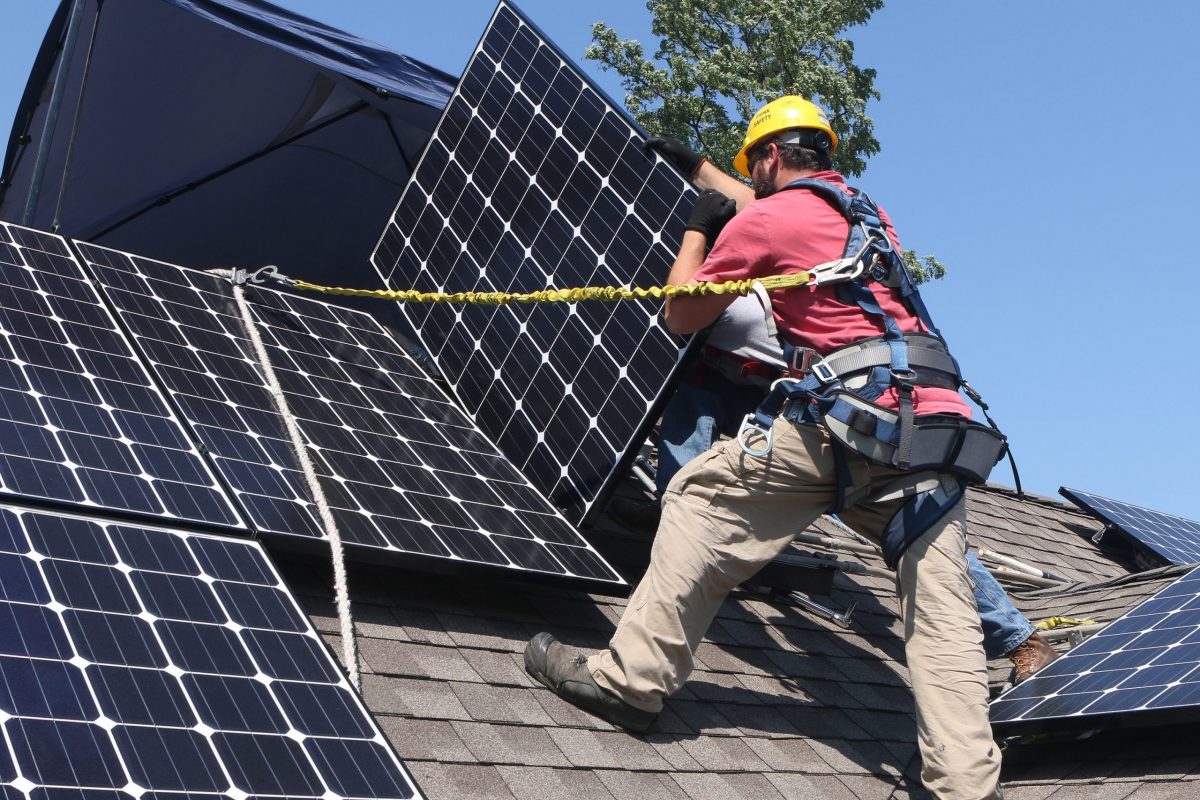Texas homeowners can slash their solar installation costs by up to 30% through the federal solar Investment Tax Credit (ITC), while unlocking additional local incentives unique to the Lone Star State. Beyond the federal credit, Texas residents benefit from property tax exemptions on their solar installations and utility-specific rebate programs that can reduce initial costs by thousands. Smart timing of your solar investment in 2024 maximizes these incentives, as federal rates will decrease in coming years.
San Antonio, Austin, and Dallas residents enjoy particularly generous municipal solar incentives, with some programs offering up to $2,500 in additional rebates on top of federal credits. When combined with Texas’s robust net metering policies and year-round sunshine, these tax credits transform solar power from a luxury into a strategic financial investment that typically pays for itself within 7-9 years. Understanding and applying for these incentives early in your solar journey ensures maximum return on your renewable energy investment.
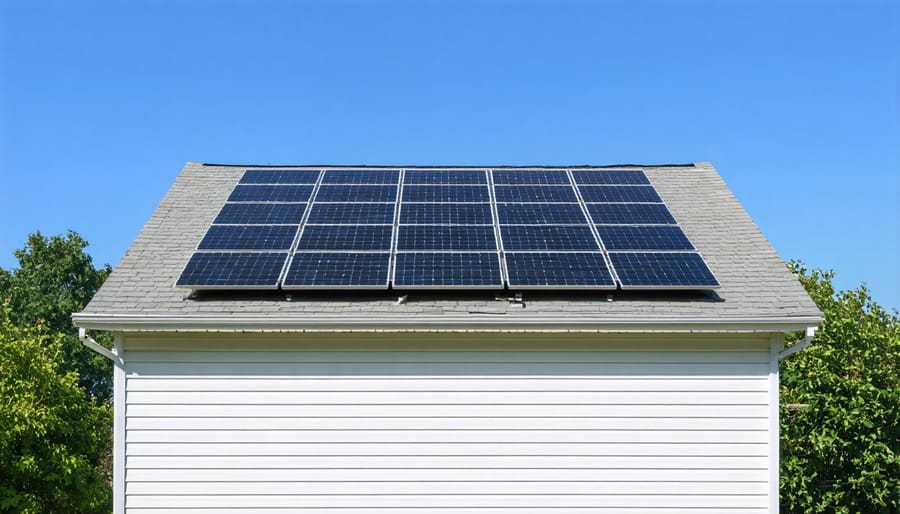
Federal Solar Tax Credit Benefits for Texas Homeowners
How the Federal Tax Credit Works
The federal solar tax credit offers homeowners a significant 30% reduction in their solar installation costs through 2032. For a detailed breakdown, check out our comprehensive federal solar tax credit guide.
Here’s how to calculate and claim your credit:
1. Add up all eligible expenses, including:
– Solar panel equipment costs
– Installation labor
– Permit fees
– Energy storage devices
– Sales tax on eligible expenses
2. Multiply your total by 30% to determine your credit amount. For example, a $20,000 system would yield a $6,000 tax credit.
3. Complete IRS Form 5695 with your tax return. You’ll need:
– Proof of purchase and installation
– Contractor documentation
– Final building permits
– Utility connection approval
If your tax liability is less than your credit amount, you can carry over the remaining credit to next year’s taxes. Remember, this credit reduces what you owe dollar-for-dollar, making it more valuable than a standard deduction.
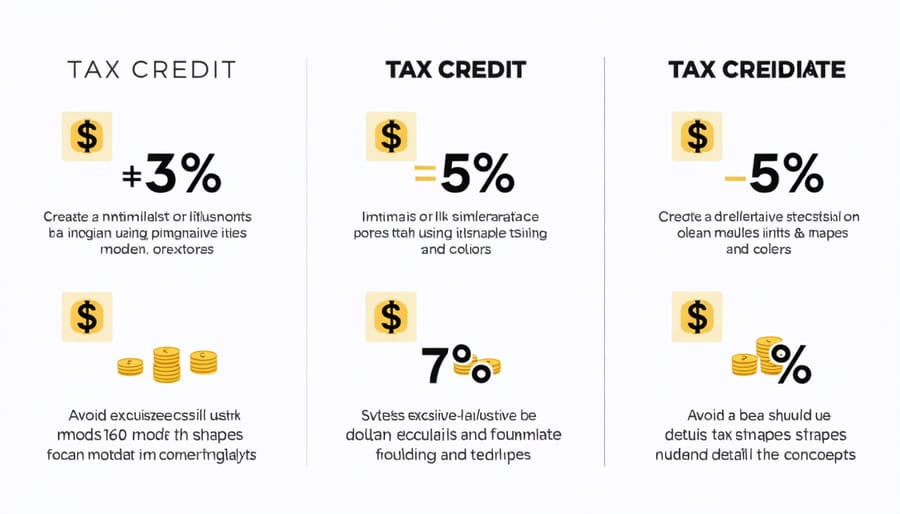
Eligibility Requirements
To qualify for the federal solar tax credit in Texas, you must meet several straightforward requirements. First, you need to own your home – renters aren’t eligible for this incentive. The solar panel system must be installed at your primary or secondary residence within Texas, and you must have purchased the system outright or financed it through a loan. Leased systems don’t qualify for the tax credit.
The solar installation must have occurred during the tax year for which you’re claiming the credit, and you need to have sufficient tax liability to claim the credit. Remember that while the credit can be carried forward to future tax years, you must have some tax liability to benefit from it.
Your solar panel system should be new or being used for the first time – the credit doesn’t apply to secondhand equipment. Additionally, the system must be installed properly and meet all local building codes and regulations. The good news is that most residential solar installations in Texas easily meet these requirements when working with qualified installers.
If you’re uncertain about your eligibility, consulting with a tax professional can help ensure you meet all necessary criteria before proceeding with your solar investment.
Texas-Specific Solar Incentives
Property Tax Exemption
Texas offers a generous property tax exemption that makes solar installations even more attractive for homeowners. Under Section 11.27 of the Texas Tax Code, the added value that solar panels bring to your property is 100% exempt from property tax assessments. This means if your home’s value increases by $20,000 after installing solar panels, you won’t pay any additional property taxes on that amount.
To qualify, your solar system must be primarily used for on-site energy needs and meet local building codes. The exemption is automatic and permanent – you won’t need to reapply annually. This benefit applies to both photovoltaic systems and solar thermal installations, including all related equipment and storage components.
For example, if your home is valued at $300,000 and you add a $25,000 solar system, your property tax assessment will remain at $300,000 rather than increasing to $325,000. This exemption can lead to significant long-term savings, especially in areas with high property tax rates, making solar investments even more financially rewarding for Texas homeowners.
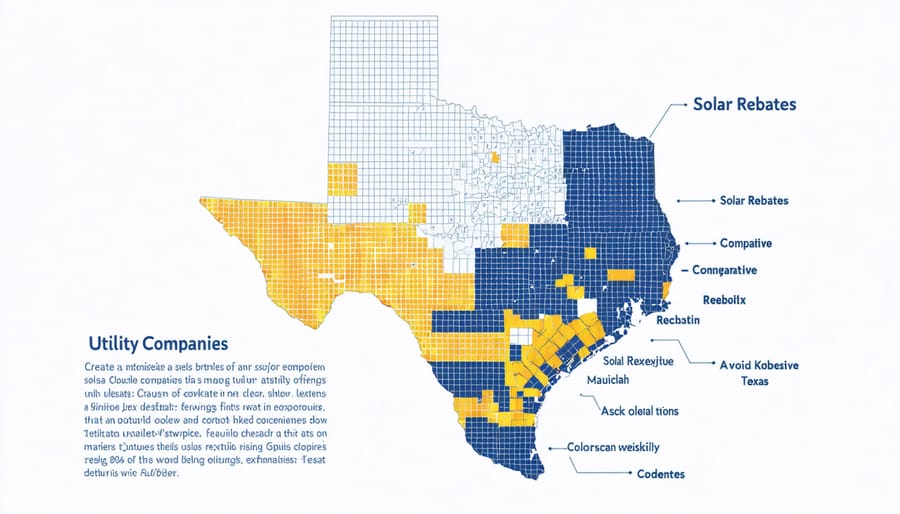
Local Utility Rebates
Beyond state and federal incentives, many Texas utility companies offer additional rebates to encourage solar adoption. Local solar incentives vary significantly depending on your service provider and location.
Austin Energy leads the pack with their Solar Rebate Program, offering up to $2,500 for residential installations. CPS Energy in San Antonio provides rebates of $2,500 per system for qualifying homeowners. Dallas-area residents served by Oncor can receive incentives of $0.40 per watt installed, potentially saving thousands on their solar investment.
El Paso Electric offers their customers a renewable energy credit program, while Green Mountain Energy provides solar buyback plans that help maximize your system’s financial benefits. AEP Texas and Texas-New Mexico Power also maintain solar incentive programs for their service areas.
These utility rebates can be combined with federal tax credits to significantly reduce your overall installation costs. However, funding for these programs is often limited and distributed on a first-come, first-served basis. Some utilities also require you to work with approved installers to qualify for rebates.
To access these savings, contact your local utility provider directly or work with a certified solar installer familiar with your area’s programs. Keep in mind that rebate amounts and program availability may change throughout the year, so it’s wise to verify current offerings before making your solar investment decision.
Maximizing Your Solar Tax Benefits
Timing Your Installation
Planning your solar panel installation timing can significantly impact your tax benefits in Texas. The federal solar tax credit currently offers a 30% deduction through 2032, making now an excellent time to invest. However, this rate will decrease to 26% in 2033 and 22% in 2034 before expiring in 2035.
To maximize your benefits, consider installing your system before the end of the tax year. Since you can only claim the credit when the installation is complete, scheduling your project for early or mid-year ensures you won’t miss the deadline. This timing also allows you to gather all necessary documentation and certification requirements well before tax season.
Texas weather patterns can also influence installation timing. While summer offers longer daylight hours for installation work, spring and fall typically provide milder conditions that can make the process more efficient. Additionally, scheduling during off-peak seasons (typically winter months) might result in better pricing and more flexible installation dates from solar providers.
Remember to factor in permit processing times and potential supply chain delays when planning your installation timeline. Most Texas municipalities require permits, which can take several weeks to process.
Documentation Requirements
To successfully claim your solar panel tax credits in Texas, you’ll need to maintain thorough documentation of your installation. Keep copies of your signed contract, detailed receipts, and proof of payment for all solar equipment and installation costs. Your solar installation company should provide IRS Form 5695, which is essential for claiming the federal tax credit.
Make sure to retain records showing your system’s technical specifications, including the total kilowatt capacity and equipment certifications. You’ll also need documentation proving your system meets local building codes and utility requirements. If you’re claiming additional local incentives, keep copies of any utility company agreements or rebate applications.
Store digital and physical copies of your solar panel warranty information, building permits, and inspection certificates. Take photographs of your installation before, during, and after completion. These images can be valuable for insurance purposes and future property assessments.
For business installations, maintain detailed records of depreciation calculations and business use percentages. Consider creating a dedicated folder, both physical and digital, to organize all solar-related documentation for tax season and future reference.
Common Questions About Solar Tax Credits in Texas
Many Texas homeowners ask us about solar tax credits, and we’ve compiled the most common questions to help you better understand these incentives.
Q: Can I claim both federal and local tax credits?
A: Yes, you can combine federal tax credits with local incentives and utility rebates. These incentives stack to maximize your savings on solar installation.
Q: What happens if my tax liability is less than the credit amount?
A: The federal solar tax credit can be carried forward to future tax years if you can’t use the full amount in the first year. This ensures you can take full advantage of the credit over time.
Q: Do I qualify if I’m installing solar on a rental property?
A: Yes, as long as you own the property and the solar system, you can claim the tax credit for rental properties that you own.
Q: Are battery storage systems eligible for tax credits?
A: Yes, battery storage systems qualify for the federal tax credit when installed with solar panels. They must be charged primarily by solar energy to be eligible.
Q: How do I claim the solar tax credit?
A: You’ll need to file IRS Form 5695 with your federal tax return. Keep all receipts and documentation from your solar installation for your records.
Q: What if I install solar panels mid-year?
A: The tax credit applies to the tax year in which the installation was completed. Partial installations may qualify if they’re operational by December 31st.
Q: Is there a maximum credit amount?
A: While there’s no dollar cap on the federal tax credit, it’s calculated as a percentage of your total solar system cost, including installation.
Taking advantage of solar tax credits in Texas represents a smart investment in both your home’s value and our environment. By combining federal incentives with local utility rebates, you can significantly reduce your initial solar installation costs while securing long-term energy savings. Don’t let this opportunity slip away – the federal tax credit will gradually decrease in the coming years. With Texas’s abundant sunshine and growing support for renewable energy, there’s never been a better time to make the switch to solar power. Contact a qualified solar installer today to learn how these incentives can work for your specific situation and start your journey toward energy independence and substantial utility savings.

